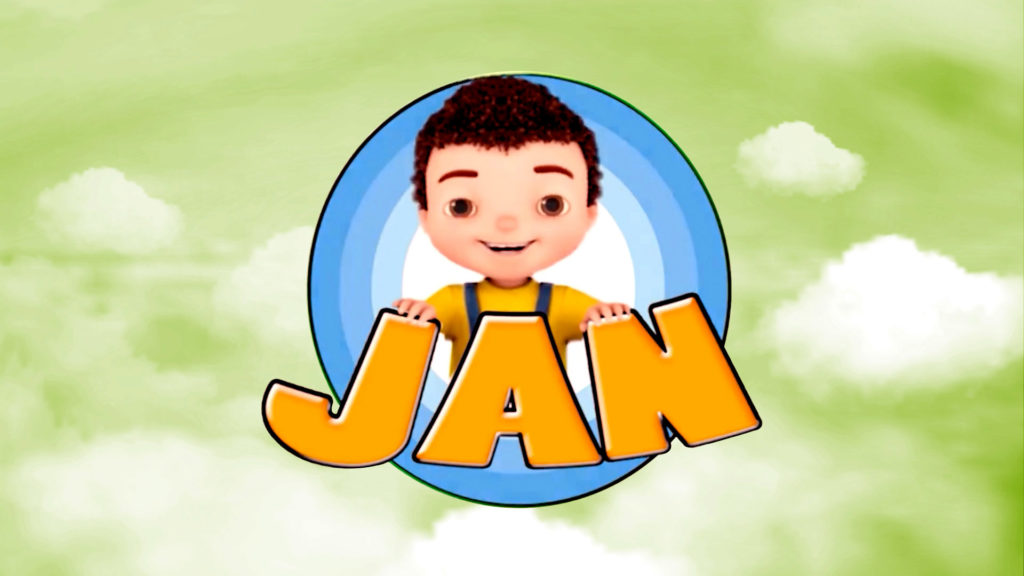Jan Dinsdale - Exploring The 'Jan' Element
When you hear a name like Jan Dinsdale, it's pretty natural, I think, to wonder about its pieces. Names, you know, often carry little bits of history or meaning within them, like tiny, hidden stories. Sometimes, a name might just sound pleasant, but other times, a part of it, like "Jan," could actually point to something quite specific, something we encounter pretty often without even giving it much thought. So, what exactly does that "Jan" part usually bring to mind for most people?
It's almost as if names are a bit like puzzles, with each section potentially holding a clue. For someone named Jan Dinsdale, the "Jan" bit, in particular, tends to make people think of a certain time of year, a fresh start, or perhaps even an old story. It’s a common abbreviation, after all, and its roots go back a long way, carrying a certain significance that might just surprise you. We are going to look into that.
We’re going to take a closer look at what "Jan" typically means, pulling information from what we generally know about how words like this are used. We'll explore its background, how it fits into our daily schedules, and why these short forms are so helpful. This way, we can better appreciate the simple power of a name's beginning, even if it's just a few letters, and see how it connects to a much bigger picture, really.
- Unforgettable Harmonies The Musical Legacy Of Stevie Wonder And Michael Jackson
- Unveiling The Life Of Whoopi Goldberg And Ted Dansons Daughter
- Unveiling The Life And Legacy Of Taylor Hanson
- Is Kris Jenners Mum Still Alive Unraveling The Family Legacy
- Exploring The Life And Love Of Hannah Einbinder Who Is Her Partner
Table of Contents
- What Does 'Jan' Usually Mean?
- The Roman Roots of 'Jan Dinsdale's Jan'
- How Do We See 'Jan' in Everyday Life?
- Jan Dinsdale's 'Jan' Beyond Just Dates
- Why Do Abbreviations Like 'Jan' Matter?
- Shortening Our Words - A Look at 'Jan Dinsdale's Jan' and More
- Can 'Jan' Really Tell Us About 'Jan Dinsdale'?
- The Personal Touch of 'Jan Dinsdale's Jan'
What Does 'Jan' Usually Mean?
When you encounter "Jan," whether it is part of a person's name like Jan Dinsdale or just standing on its own, it most often points to the very first month of the year. This short form, "Jan," is a common way to write "January," which marks the start of a new calendar cycle. It's a time that, in many cultures, feels like a fresh beginning, a moment for new plans and looking ahead. This period, too, holds a special spot, as it bridges the old year with the new one, offering a unique perspective on both what has passed and what is yet to come. It’s a pretty significant time, actually, for many.
The full name, January, carries with it a fascinating tale, going all the way back to old Roman stories. The name itself comes from a god, a very special protector named Janus. What made Janus so unique, you know, was his appearance: he had two faces. One face, it is said, looked forward, gazing into the future, while the other looked back, reflecting on the past. This imagery really captures the essence of January itself, doesn't it? It's a month where we often find ourselves doing just that—reflecting on what was and planning for what will be. So, the connection between the month and this ancient deity is quite fitting, more or less.
This dual perspective of Janus, looking both ways, makes him a powerful symbol for beginnings and transitions. People in ancient Rome, apparently, thought it was a very good idea to name the first month after him, symbolizing the entry into a new period while still holding memories of the previous one. So, when we see "Jan" today, it carries this long history, even if we don't always think about it. It’s a small word, but it holds a lot of meaning, in a way, connecting us to very old traditions and ways of thinking about time. It is a simple abbreviation, yet it carries a surprisingly rich story.
- Kenny Johnson The Versatile Talent Of The Entertainment Industry
- Exploring The Dynamic Duo Of Keira Knightley And Natalie Portman
- Drew Pritchard Sons A Glimpse Into Their Lives
- Welcoming The Joy Dave Grohls New Daughter
- Unraveling The Truth Behind Ellen And Portias Divorce
The Roman Roots of 'Jan Dinsdale's Jan'
The story of "Jan" truly begins with the Roman calendar, a system that, you know, shaped how we measure time even today. The god Janus, from whom January gets its name, was a deity of beginnings, transitions, doorways, and time itself. He was often shown with two faces, one looking forward and one looking backward, symbolizing his ability to see both the past and the future. This characteristic makes him a truly fitting figure for the first month of the year, which naturally involves a look back at the previous year and a gaze toward the one ahead. It's quite a thoughtful choice, I think, for a name.
The Roman people held Janus in high regard, considering him the guardian of gates and passages. His temples had doors that were open during times of war and closed during periods of peace, reflecting the transitions between these states. This constant movement between different phases, like the turning of a year, makes the connection between Janus and January, or "Jan," pretty clear. It’s not just a random name; it's steeped in purpose and belief, suggesting a time for new starts and also for remembering what came before. This is, you know, a pretty deep idea for a simple month name.
So, when we use the short form "Jan" for January, we are, in a way, nodding to this ancient Roman heritage. It’s a small linguistic link to a powerful symbol of change and continuity. The idea that a single word, or even a shortened version of it, can carry such historical and philosophical weight is quite interesting, don't you think? It shows how deeply language can be connected to culture and belief systems that are, you know, very old. The name "Jan," even as part of a name like Jan Dinsdale, might just whisper these old stories, if you listen closely, more or less.
How Do We See 'Jan' in Everyday Life?
Beyond its ancient origins, the abbreviation "Jan" pops up all over the place in our daily routines. You’ll spot it on calendars, of course, where it helps keep things neat and tidy. It’s there on official documents, in appointment books, and even in digital schedules. This short form is incredibly practical, allowing us to quickly note down dates without writing out the full month name every single time. It saves a little bit of space and effort, which is, you know, pretty useful in a fast-paced world. It's a simple convenience, but it adds up.
Think about how often you glance at a calendar or check a date. Whether it's a paper calendar hanging on your kitchen wall or the one on your phone, you'll almost certainly see "Jan," "Feb," "Mar," and so on. These abbreviations are a kind of universal shorthand for months. They are recognized by most people, making communication about dates much smoother. This widespread recognition means that if you see "Jan 15," you instantly know it means the fifteenth day of the first month, regardless of where you are. That’s pretty neat, isn't it?
The ease with which we understand these shortened forms speaks to how ingrained they are in our language and daily habits. It's not just "Jan" either; it extends to all the months of the year. From "Feb" for February to "Dec" for December, these short names help us organize our lives. They are a little bit like linguistic shortcuts that everyone understands, making it easier to share information quickly and clearly. So, in many ways, "Jan" and its fellow abbreviations are quiet workhorses of our calendar system, just doing their job, really.
Jan Dinsdale's 'Jan' Beyond Just Dates
While "Jan" most commonly refers to January, it's worth remembering that names can have many layers. When we think about "Jan" as part of "Jan Dinsdale," it takes on a different kind of meaning. Here, it’s not about a month or a date; it’s a personal identifier, a way to refer to a person. This shift from a temporal marker to a personal one highlights the flexibility of language. It shows how the same set of letters can serve completely different purposes, depending on the context. It’s quite fascinating, actually, how that works.
In the context of a name, "Jan" could be a given name, a short form of another name, or perhaps even a family name. Its sound and spelling are familiar to many, which might give it a sense of approachability. While the calendar "Jan" is about the passage of time and new beginnings, the personal "Jan" is about individual identity. It’s the way someone is addressed, a label that helps distinguish one person from another. This personal connection is, you know, very different from the abstract concept of a month.
So, for someone named Jan Dinsdale, the "Jan" part is probably more about who they are as an individual than about the start of the year. Yet, the common association with January might, in a subtle way, bring to mind ideas of freshness or a new start. It’s a bit of a linguistic echo, perhaps, connecting the personal to the general. This kind of interplay between different meanings is, I think, what makes language so rich and, you know, pretty interesting to explore. It’s a simple word, but it carries a lot of potential associations.
Why Do Abbreviations Like 'Jan' Matter?
Abbreviations, like "Jan" for January, play a pretty big role in how we communicate every day. They are not just about saving space on a calendar; they are about efficiency and common understanding. Imagine if we had to write out every single month's full name every time we mentioned a date. It would take longer, and documents would be much longer too. These short forms help us convey information quickly and effectively, which is, you know, really important in our busy lives. They streamline things quite a bit.
The beauty of abbreviations is their widespread acceptance. When someone sees "Jan," they don't have to guess what it means; the meaning is clear. This shared understanding is what makes them so powerful. It's a bit like a secret code that everyone knows, allowing for quick exchanges of information without needing extra explanation. This kind of linguistic shorthand is vital for clear communication, especially when space or time is limited. So, they are not just minor details; they are actually pretty fundamental to how we share information.
Moreover, these abbreviations are often the first step in learning about the full names and their origins. For a child learning the months, seeing "Jan" on a calendar might lead them to ask what the full name is, and then perhaps, what its story is. This can open up a whole new avenue of discovery, from the Roman gods to the history of our calendar system. So, these simple short forms are not just practical tools; they are also little gateways to a deeper appreciation of language and history. They are, you know, quite useful in many ways.
Shortening Our Words - A Look at 'Jan Dinsdale's Jan' and More
The practice of shortening words, like turning "January" into "Jan," is a very common feature of language. It happens because people naturally look for ways to make communication quicker and simpler. We see this with all sorts of words, not just months. Think about how we say "TV" instead of "television" or "phone" instead of "telephone." These are all examples of our tendency to condense language for ease of use. It’s a pretty natural human behavior, really.
For months, this shortening is particularly helpful because we refer to them so often. Here’s a quick look at how the first few months, along with others, are typically abbreviated:
- January becomes "Jan"
- February becomes "Feb"
- March becomes "Mar"
- April becomes "Apr"
- May usually stays "May" (it’s already quite short!)
- June usually stays "Jun" (also quite short)
- July usually stays "Jul" (again, already short)
- August becomes "Aug"
- September becomes "Sept" or "Sep"
- October becomes "Oct"
- November becomes "Nov"
- December becomes "Dec"
You can see how this system makes writing dates much more compact. We often spot these short forms on all kinds of calendars and official papers. This consistency, you know, makes it easy for everyone to understand what month is being referred to without any confusion. It’s a straightforward system that just works, more or less, for everyone.
Even beyond months, we sometimes see other date-related abbreviations, like "rd" or "th" after numbers. For example, the third day of the month is often written as "3rd," and the twenty-third as "23rd." The "rd" comes from "third." For most other numbers, we use "th," like "4th" for the fourth or "24th" for the twenty-fourth. These little additions help clarify the order of days, and they are, you know, pretty standard. This attention to detail, even in abbreviations, just helps keep our dates clear and easy to read, which is quite important.
Can 'Jan' Really Tell Us About 'Jan Dinsdale'?
When we look at the name "Jan Dinsdale," and we’ve spent some time exploring the meaning of "Jan" as a month, it's fair to ask: does the meaning of "Jan" (as in January) actually tell us anything about a person named Jan Dinsdale? The direct answer is, well, probably not in
- Keanu Reeves And His Beloved Partner Exploring The Life Of Keanu Reeves Wife
- Exploring The Charismatic Journey Of Raj In The Big Bang Theory
- Love Story The Journey Of Thomas Rhett And Lauren Akins
- Unveiling The Talent Behind Alex Dunphy In Modern Family
- Unveiling The Journey Of Jason Tartick From Finance To Fame

Turkish Drama Series that you can’t ignore

Jan Koum Biography - Childhood, Life Achievements & Timeline

Jan (2023) - Posters — The Movie Database (TMDB)